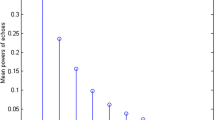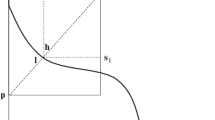Abstract
Transmitter power control in cellular networks is principally used to maintaina stable voice quality and to improve bandwidth utilization. There are twomain types of quality based power control algorithms that have been extensivelystudiedin the literature and implemented in practice. One is the Signal toInterferenceRatio (SIR) based algorithms, and the other is the Bit Error Rate(BER) basedalgorithms. Several practical issues however, were left open in the algorithms that havebeen proposed in the literature. The most critical issue in the SIR-basedalgorithms is how to determine the SIR target parameter; and the most critical one in theBER-basedalgorithms is how to derive good BER estimators in light of the rareoccurrences of erroneous bits. Another issue that is shared by both algorithm types is thefunctional relation between the BER and the SIR. This relationship is required as one mayserve as a control valve and the other as a control objective. Determining the SIR target control parameter (in SIR or BER based algorithms) involves more than just a static transformation between the BER and the SIR.Sincethe actual SIR values is a stochastic process in nature, its variation andtimecorrelation must be accounted for. This paper addresses the problems described above by evaluating a durationoutage probability of the underlying time process of the SIR values. Weshow that this probability can reasonably be approximated by a simple expressionthat relates between the duration outage probability and the SIR targetcontrolparameter. The distributed algorithm that is implied by this method is adurationoutage based power control that uses an estimator for the most likelyevent (incontrast to BER-based algorithms).
Similar content being viewed by others
References
M. Andersin, “Power Control and Admission Control in Cellular Radio Systems”, Ph.D. Thesis by M. Andersin, TRITA-S3-RST-9606, KTH, Stockholm, 1996.
M. Andersin, “Distributed Radio Resource Allocation in Highway Microcellular Systems”, in Proc. 5th WINLAB Workshop, April 1995.
M. Andersin and Z. Rosberg, “Time Variant Power Control in Cellular Networks”, submitted to Proc. 7th PIMRC Symposium, Oct. 1996, and in “Power Control and Admission Control in Cellular Radio Systems”, Ph.D. Thesis by M. Andersin, TRITA-S3-RST-9606, KTH, Stockholm, 1996.
S.A. Grandhi, J. Zander and R. Yates, “Constrained Power Control”, Wireless Personal Communications, Vol. 1, No. 4, 1995.
D. Giancristofaro, “Correlation Model for Shadow Fading in Mobile Radio Channels”, Electronic Letters, Vol. 32, No. 11, pp. 958–959, 1996.
M. Gudmundson, “Correlated Model for Shadow Fading in Mobile Radio Systems”, Electronics Letters, Vol. 27, No. 23, pp. 2145–2146, 1991.
P.S. Kumar, R.D. Yates and J. Holtzman, “Power Control with Bit Error Rates”, in Proc. MILCOM'95, San Diego, 1995.
M.R. Leadbetter, G. Lindgren and H. Rootzen, Extremes and Related Properties of Random Sequences and Processes, Springer-Verlag: New York, 1983.
N. Mandayam, P-C. Chen and J. Holtzman, “Minimum Duration Outage for CDMA Cellular Systems: A Level Crossing Analysis”, Journal of Wireless Personal Communications, Vol. 7, No. 2–3, pp. 135–146, 1998.
N.A. Marlow, “A Normal Limit Theorem for Power Sums of Normal Random Variables”, Bell System Technical Journal, Vol. 46, No. 9, pp. 2081–20089, 1967.
A. Papoulis, Probability, Random Variables, and Stochastic Processes, McGraw-Hill: New York, 1984.
Z. Rosberg, “Fast Power Control in Cellular Networks Based on Short-Term Correlation of Rayleigh Fading Systems”, in Proc. 8th WINLAB Workshop, April 1998.
G.L. Stuber, Principles of Mobile Communication, Kluwer: Boston, 1996.
Author information
Authors and Affiliations
Rights and permissions
About this article
Cite this article
Rosberg, Z. Transmitter Power Control with Adaptive Safety Margins Based on Duration Outage. Wireless Personal Communications 19, 81–90 (2001). https://doi.org/10.1023/A:1011953803199
Issue Date:
DOI: https://doi.org/10.1023/A:1011953803199




